False Facts About Lobster You Believed
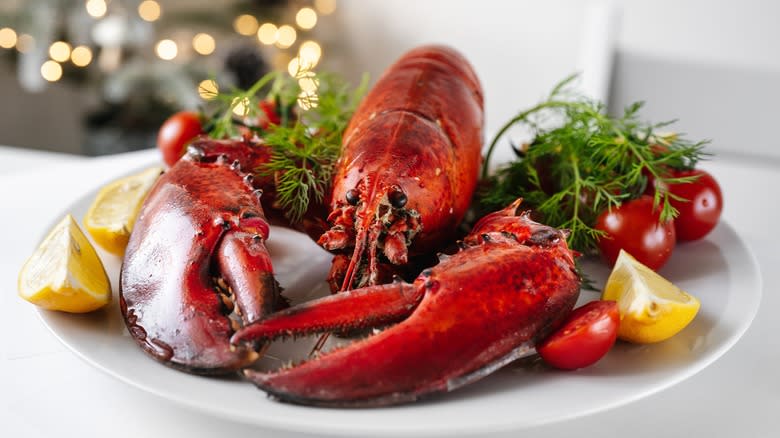
One of the most expensive seafood options, lobster is well-known for its delicate and sweet meat. The most predominant type of lobster in the U.S., the American lobster, is easily recognizable by its hard shell, two prominent claws, and a distinct fan-shaped tail. Typically enjoyed boiled, steamed, or grilled, lobsters are a staple menu item at most upscale seafood restaurants. They are quite popular — in 2019, over 200 million pounds of American lobster were caught in the waters off the coast of the U.S.
The appeal of lobsters goes beyond their delicious taste and quirky appearance. They also have a fascinating biology. The American lobster, for instance, can weigh a hefty 44 pounds, grow up to 3.25 feet in length, and live as long as 100 years. They shed their shell several times a year to grow in a process called molting. Lobsters are also known for their powerful claws, which they use for hunting and defense. One of the two claws is used to crush prey, while the other is used for tearing food. Additionally, lobsters possess the remarkable ability to regrow lost limbs.
There's little doubt that lobsters are in a league of their own. Unfortunately, the strange nature of their biology and behavior has led to a great deal of misinformation. If you're eager to debunk the myths surrounding these intriguing aquatic creatures, keep reading.
Read more: US Foods You Surprisingly Can't Find In Canada
Lobsters Have Always Been Expensive
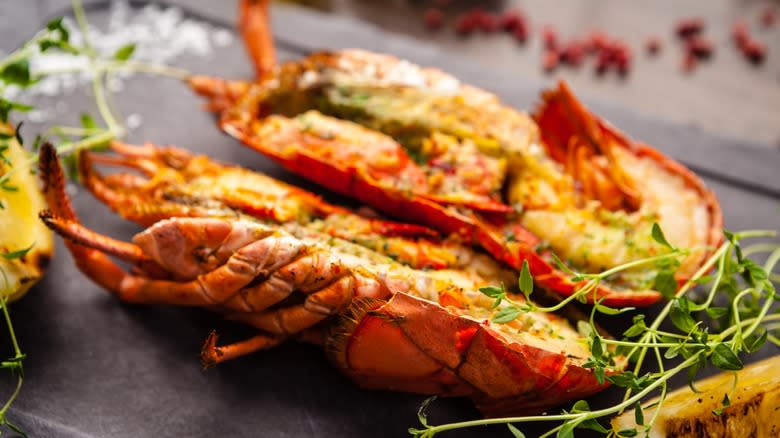
Lobster isn't your everyday food choice. Instead, the marine delicacy is usually reserved for special occasions due to its steep price tag. Costing between $7.87 and $22.83 per pound, the shellfish can fetch even higher prices at restaurants, with diners commonly paying up to $100 for a two-pound lobster.
With such exorbitant prices, many may be surprised to find out that lobster meat wasn't always this expensive. It's all about supply and demand economics. When European settlers first arrived in North America, lobsters were abundant. In fact, the crustaceans were so plentiful that they were even used as bait and fertilizer, as well as sustenance for prisoners and slaves.
Lobsters started becoming more popular in the mid-19th century with the advent of the railway. Transportation improvements meant that lobster could be distributed across the U.S., and it grew in popularity. The shellfish also started being canned, which opened it up to a wider consumer base. Restaurants quickly caught on, adding lobster to their menus. By the time World War II rolled around, lobster was already in high demand and prices rose.
There's Only One Type Of Lobster
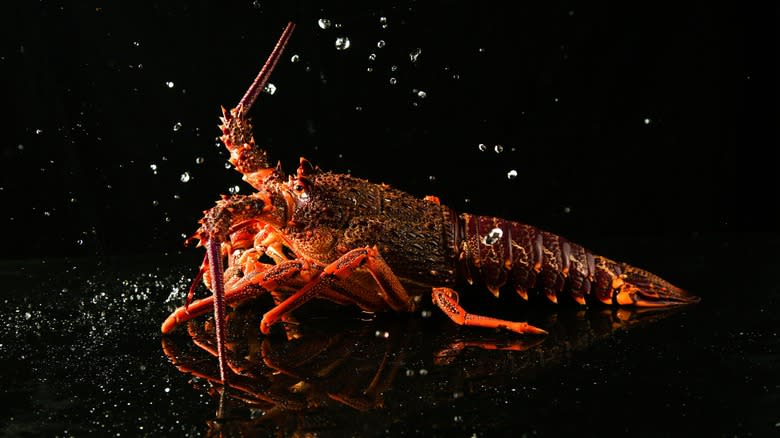
When most people think about lobsters, they usually picture the American or Maine lobster, characterized by two large claws. The dark green-brown crustacean, which turns bright red when cooked, has become the iconic image of a lobster in popular culture, frequently appearing in movies, cartoons, and advertisements. However, this isn't the only type of lobster found off the coast of the U.S.
The Maine lobster can be found in the Atlantic Ocean from Newfoundland to New Jersey, but there's another type of lobster that's also native to the U.S. While not as prevalent as the Maine lobster, the spiny lobster, or rock lobster, inhabits the waters off Southern California and Florida. What distinguishes the spiny lobster from the Maine lobster is its lack of claws and the distinctive antennae above its eyes.
Besides the Maine lobster and the spiny lobster, several other lobster species are caught commercially around the world, each with unique characteristics. For instance, the slipper lobster, found in the Indian and Pacific Oceans, as well as parts of the Atlantic Ocean, has a flattened, slipper-like body and lacks claws. There's also the European lobster, which lives in the eastern Atlantic Ocean. It resembles the Maine lobster, but with a bluer color, and is prized for its sweet meat.
Female Lobsters Taste Better Than Their Male Counterparts
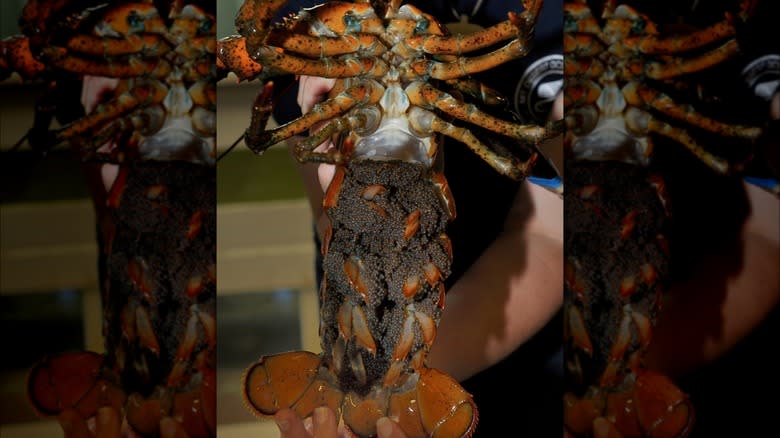
The belief that female lobsters taste better than male lobsters probably stems from the fact that female lobsters can carry roe, or unfertilized eggs, which is considered a delicacy by some seafood enthusiasts. Since females can potentially have 100,000 eggs at a time, this could be a significant factor in the perceived difference in taste. Female lobsters also tend to have larger tails than male lobsters, while male lobsters have larger claws. Despite these variations, the actual taste of lobster meat isn't different between the sexes.
Even though some diners have a penchant for lobster roe — or coral, as it's also sometimes called — egg-bearing female lobsters are protected to promote the sustainability of lobster populations. By preventing the harvest of female lobsters carrying eggs, the regulations aim to maintain a healthy breeding population, ensuring that there are enough lobsters for future generations. In Maine, for instance, regulations prohibit the harvesting or selling of female lobsters with eggs on their underside, or females with a v-notch on their tail, which has been made to indicate their reproductive status.
Lobsters Are Always Red
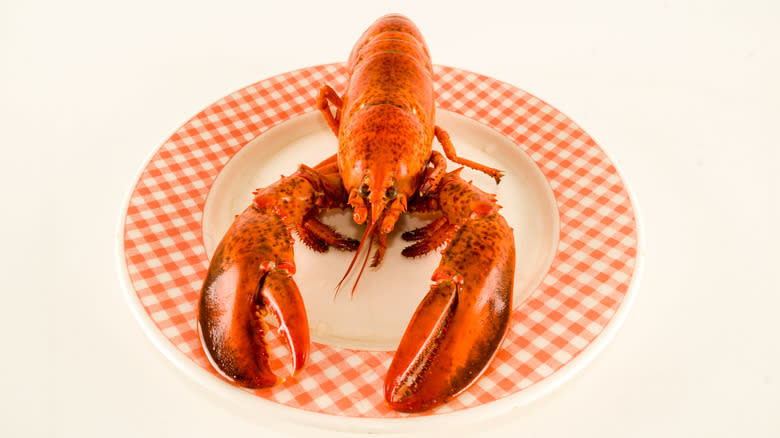
Most of us are familiar with using the expression "as red as a lobster" to describe someone who's spent a little too much time in the sun. However, the saying isn't entirely accurate because lobsters come in many different colors. Fresh, live lobsters can be different shades of blue, green, orange, calico, and yellow. After all, these hues — rather than bright red — are probably more likely to keep the crustaceans inconspicuous and safe from predators on the seafloor.
Lobsters only turn bright red when subjected to heat. When lobsters are boiled, steamed, or grilled, their shells turn red due to a transformation involving a pigment called astaxanthin. In its natural state, astaxanthin is attached to a protein named crustacyanin, which results in the lobster's shell having a blue-green or brown appearance. However, heat separates the astaxanthin, which is red on its own. As a result, the shell of the lobster shifts from its original color to the familiar bright red seen in cooked lobsters. Interestingly, lobster blood is clear, but turns blue when it comes into contact with oxygen.
Lobsters Live Forever
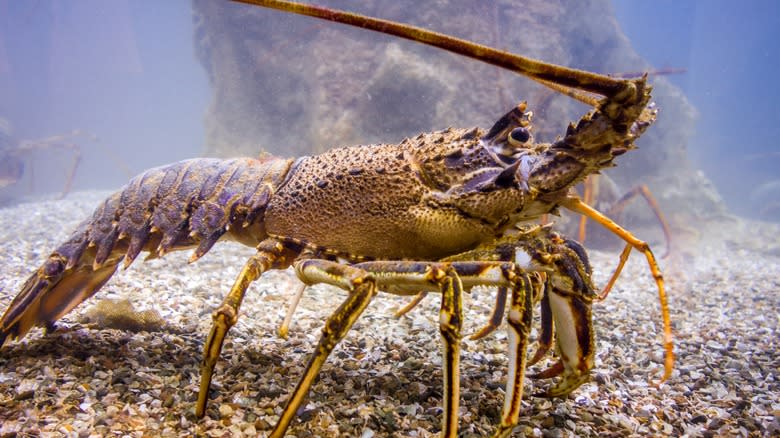
People often believe lobsters are immortal due to their unique biological traits. A significant reason for this misconception is the lobster's ability to regenerate. Lobsters grow by periodically shedding their shell and developing a larger one, a process that gives the impression of endless renewal. Furthermore, their ability to regrow amputated body parts, such as claws and antennas, probably enhances the perception of their lengthy lifespan.
Most lobsters live between 40 and 50 years, although the most resilient of these sea creatures have been known to live past 100. While the size of a lobster can be indicative of its age, this isn't the best way of estimating how long they have been alive. Instead, when determining the age of these crustaceans, scientists usually examine the growth rings around their eyes.
Aside from falling prey to predators, including humans, lobsters can die from exhaustion. While young lobsters shed their shell several times a year to allow for growth, this becomes less frequent over time. Once they reach a certain size, lobsters require more energy to abandon their old shell and grow a new one. Over time, this can become overly taxing for the creatures and they die from exhaustion. Additionally, since regenerating a larger shell also takes more time, it leaves older lobsters more vulnerable to both disease and predators.
Lobsters With Hard Shells Taste Better
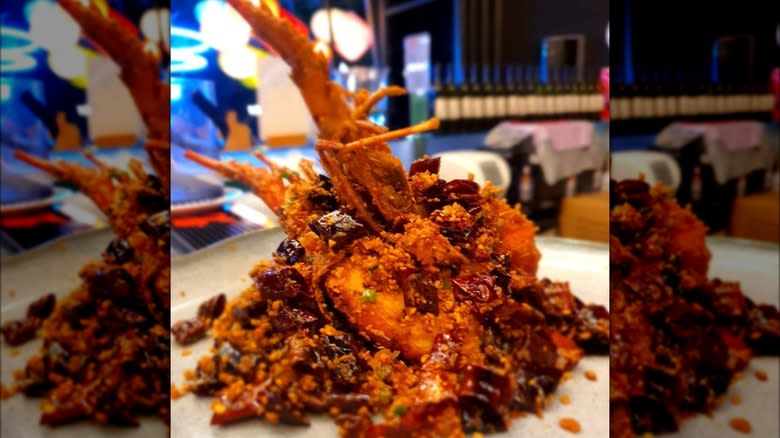
The misconception that the meat of hard-shell lobsters is better than that of their soft-shell counterparts might stem from the fact that it's usually pricier. In fact, there is another — very logical — reason for this price difference. Hard-shell lobsters have more meat than soft-shell lobsters. This increased meat content is a significant factor in the pricing, as customers are essentially getting more lobster meat from the same size of lobster.
The fact that soft-shell lobsters are less meaty than their hard-shell counterparts is linked to the process of shedding. As lobsters grow, they are forced to abandon their old shell and grow a new one in a process called molting. Because the new shell is more spacious, it absorbs more water, which makes the lobster less meaty.
There are pros and cons associated with both soft and hard shell lobsters. Firstly, hard shell lobsters are easier to transport and can live out of water for approximately 24 to 36 hours. This time is substantially reduced to between three and 15 hours for soft-shell lobsters. Soft-shell lobsters are easier to crack since their shells aren't fully developed. They also can taste slightly different. While hard shell lobster meat has a firm and dense texture, soft-shell lobsters tend to be more tender due to the marinating effect of the water inside their shells.
Lobsters Can't Feel Pain
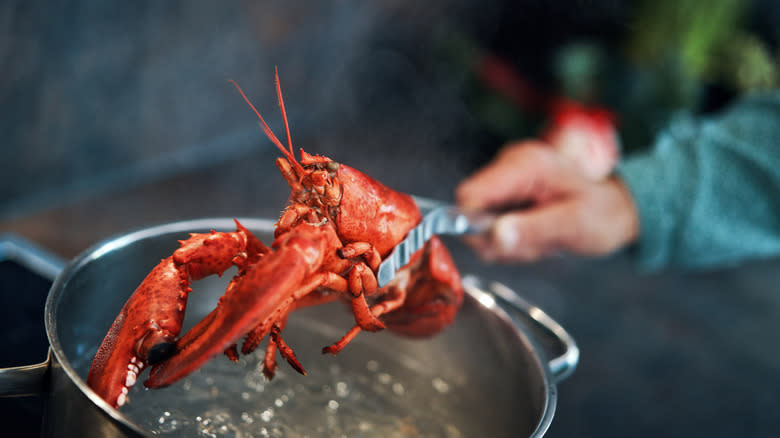
The traditional method of cooking lobsters involves boiling them while they are still alive. This is because lobsters that have died can develop harmful bacteria, potentially causing food poisoning even after cooking. As such, it may come as a surprise to many that lobsters might actually feel pain. While we can't be sure about the specifics, lobsters react physically to being boiled by twitching their tails, which is an "escape response" that lasts for around a minute. They also release cortisol, a hormone released by humans as a response to stress or pain. According to researchers at the University of Maine, icing or chilling the lobster before popping it in hot water reduces the tail twitching to around 20 seconds.
Another related myth is that live lobsters scream when boiled. This is an impossibility since lobsters don't have vocal cords and are physically incapable of making any screaming sound. In fact, the so-called scream is a high-pitched whistling caused by vapor escaping from the shell. Frozen lobsters may still make the same sound when submerged in hot water, indicating that it's an involuntary response.
Eating Lobster Meat Is Bad For Your Health
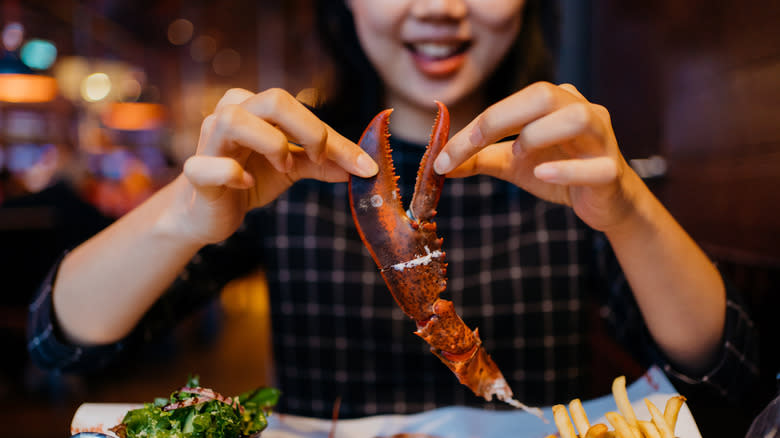
Indulging in lobster is considered to be a luxurious dining experience, but there are several reasons why some people might think that this shellfish is bad for health. This is mainly because, just like shrimp and crab, lobster is relatively high in cholesterol. In fact, according to HealthLine, one cup, or around five ounces, of lobster meat is equivalent to 70% of our daily allowance of cholesterol.
While this may sound like a lot, Eric Rimm, professor in the Departments of Epidemiology and Nutrition at Harvard T.H. Chan School of Public Health, told Consumer Reports that the cholesterol in lobster shouldn't be a major concern. "Dietary cholesterol isn't as important as was once thought. In the context of an overall healthy diet, dietary cholesterol is not strongly related to an increase in blood cholesterol or heart disease," he noted.
As it stands, lobster is an outstanding choice for a nutritious meal, offering a range of health benefits. Firstly, the crustacean is a lean source of protein, with one cup of lobster meat filled with 27 grams of protein and just 1.2 grams of fat. It's also a good source of omega-3 fatty acids, which have been credited with improving heart health, as well as selenium and copper.
Eating Lobster On New Year's Eve Brings Bad Luck
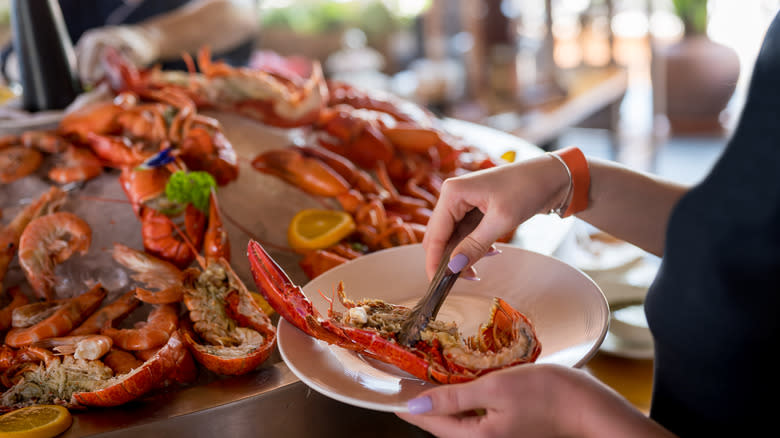
The idea that certain foods are bad luck to consume on New Year's Eve is rooted in traditions that have been passed down generations. These beliefs, which often vary by country or culture, aim to ward off bad luck in the upcoming year. One such belief revolves around lobsters. In some cultures, eating lobster on New Year's Eve is considered unlucky.
The superstition that eating lobsters on New Year's Eve brings bad luck is linked to the lobster's ability to move backward. This is interpreted as symbolic of setbacks and moving backward in life, which is considered an inauspicious way to start the new year. Similarly, chickens, which can also move backward, are considered a no-no meal on New Year's Eve by the more superstitious. This belief extends to other winged poultry, as it's thought that their consumption at the stroke of midnight might cause one's luck to take flight and disappear.
If you happen to indulge in a little lobster on New Year's Eve and are worried, there's a simple solution to put your mind at ease. Why not offset this by eating certain foods that are deemed lucky? Some foods that can help you balance out your New Year's Eve fortune include grapes, pork, or black-eyed peas.
Read the original article on Mashed.

